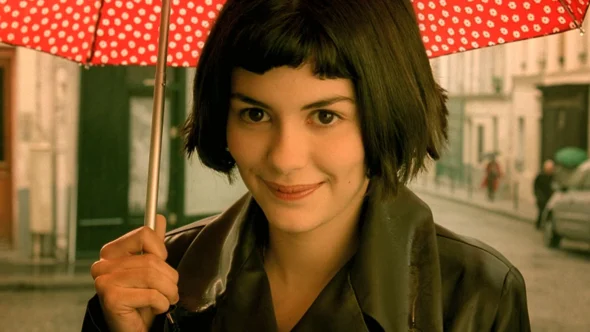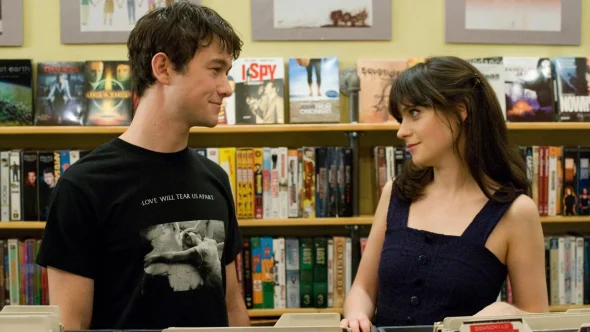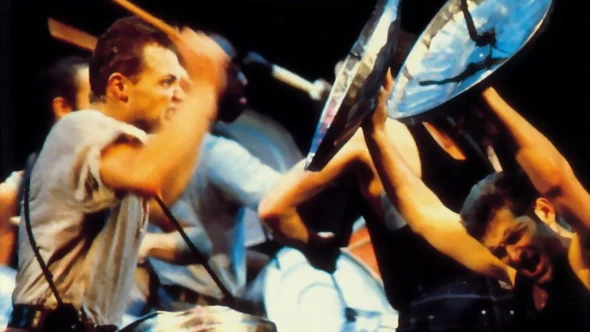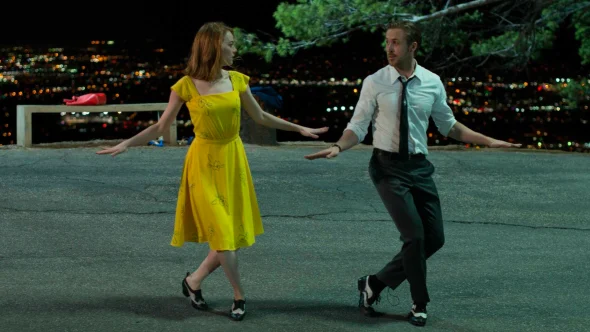
Rudy Mancuso's film school was Vine. The New Jersey native cut his teeth making six-second clips on the now-defunct social media platform, garnering the internet's attention in the process. Mancuso went on to launch his own YouTube channel and built a substantial audience with original songs and puppetry skits. But he says that becoming a filmmaker was the plan all along.
For his film debut, Música, Mancuso not only co-wrote and directed the movie, but is also the star, composer and a producer. The loosely autobiographical coming-of-age story is set in his hometown of Newark, co-stars his real-life mother, and explores his experience as a someone with synesthesia.
"The type of synesthesia I have has to do with trying to organize everyday regular sounds into some kind of musical construct, whether it be rhythm or melody," says Mancuso. "I knew that this couldn't be your conventional musical, where the cast breaks into a song and a number with vocal music. It had to be instrumental, and it had to be this weird blend of diegetic and non-diegetic."
Billed as a "non-musical musical," Música has rhythm woven throughout. Mancuso's musical influences ranged from bossa nova to samba to Brazilian funk — paying homage to the music he grew up listening to. His hope was to ultimately create something that defied genre. "You don't need musical instruments and musical people in order to make music. There's music in everything. So, in order to translate the synesthetic perspective, we did that," he explains. "We hired rhythm performers to actualize all these set pieces. Whether we gave them a fork, a broom, or a car, they would organize those sounds into music. And that became the language of the film."
Here, Mancuso shares with A.frame five of the films that most influenced Música. "These are films that I've watched over many years, and I subconsciously have stolen little ideas, motifs, devices, and figured out how to put a spin on it and do it in my own way."

Directed by: Jean-Pierre Jeunet | Written by: Guillaume Laurant
One film that we referenced a lot in our mood boards and tone boards was Amélie. It's a very multisensory experience, and obviously, when exploring synesthesia, you want to emulate that language as much as possible. I love how Amélie found this unique way to blend the grounded and fantastical. The colors, the camera work, the different tones and temperatures was something that I referenced a lot, because in Música, the cinematic language — the look, and feel, and tone, and temperatures — change in real time depending on the character or the situation.
Camila's character, Isabella, has a very gritty, grainy, warm temperature, versus Haley, Francesca Reale's character, who is a lot cooler of a temperature and is almost always static, with a lot of deep depth. And anytime the set piece breaks into music, saturation and contrast would blow, and the camera work would change. That was something that Amélie showed me a thing or two about.

Directed by: Marc Webb | Written by: Scott Neustadter and Michael H. Weber
I love what (500) Days of Summer did for the rom-com genre. It was an elevated version of that kind of film, and Marc Webb took a lot of really interesting artistic leaps that I had never seen done before. It also didn't follow your conventional structure, and it certainly didn't end in a way that a lot of romantic films end. So, that was inspirational for Música.

Written and Directed by: Edgar Wright
Baby Driver and its rhythmic and musical editorial style is definitely important to mention, because it was a modern version of treating music as a character in a way that I've always wanted to see. There's also that opening credits sequence with Baby walking the streets, singing along to the tune that's playing in the backtrack, and the lyrics appear in the actual locations. That's something that directly inspired the three pieces where the lyrics Rudy's singing appear on the subway.

Directed by: Luke Cresswell and Steve McNicholas
A direct inspiration for Música was Stomp Out Loud, which most people know as a live show, but it was also adapted as a film. I saw it in middle school in music class, and I was like, "Whoa, these guys are turning basketballs, and pots and pans, and construction tools into music? Boy, would that be a really cool backdrop for a film!"

Written and Directed by: Damien Chazelle
I can't forget to mention La La Land, because what a beautiful example of a modern-day movie musical, rehabilitated for modern audiences. Even though Música isn't a sing-song musical number kind of musical, I am inspired by anything that uses music in a unique way, which La La Land obviously did.







